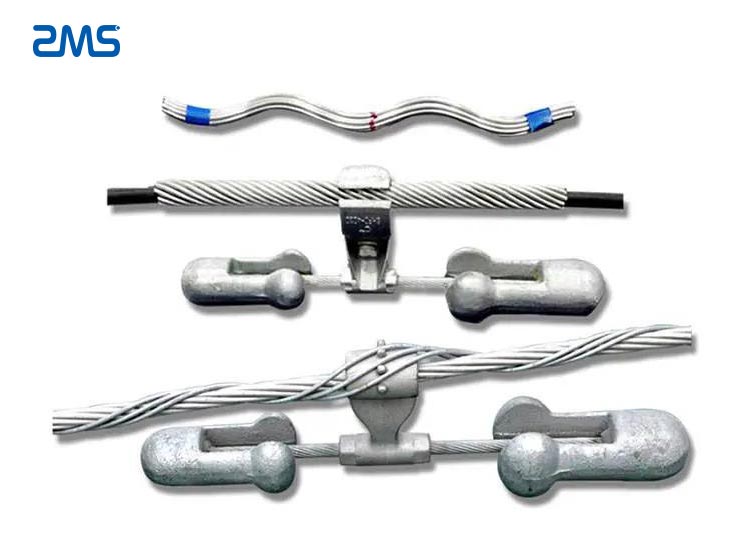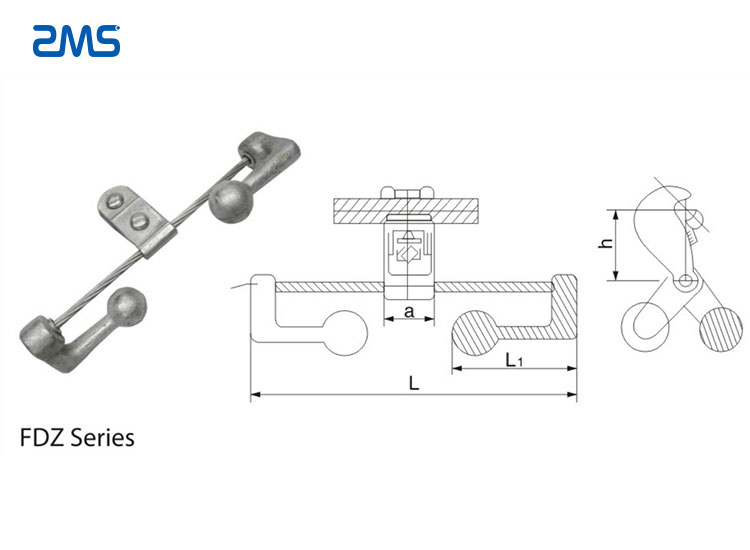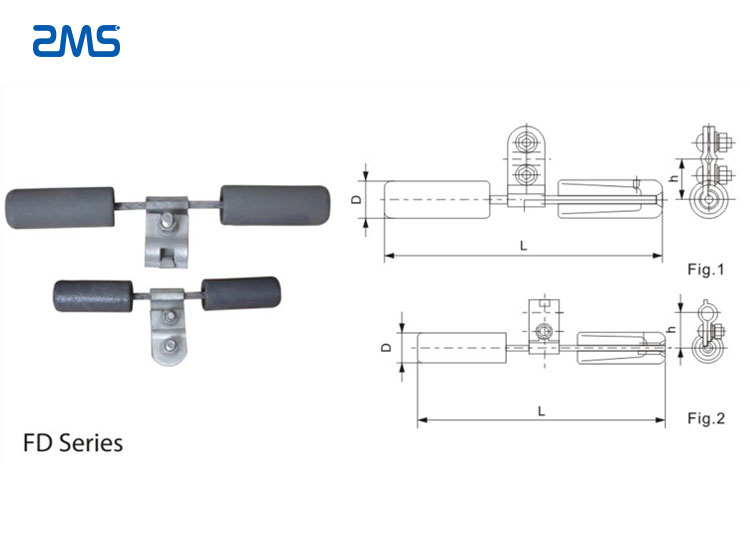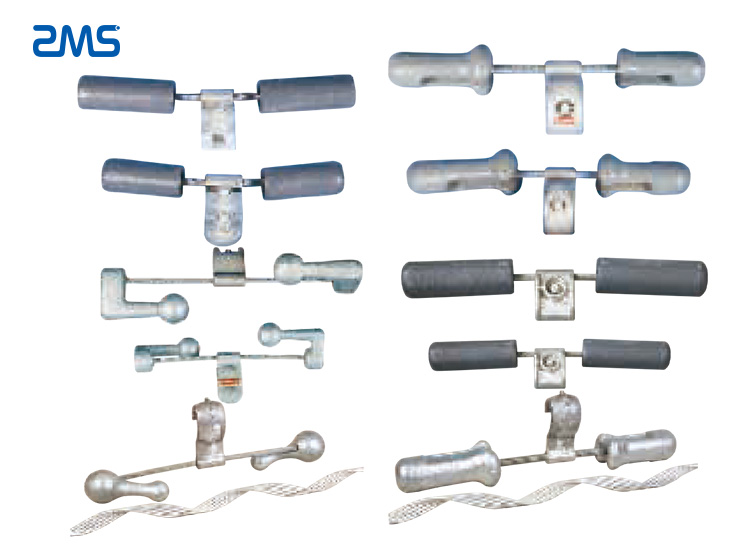Stockbridge Damper
The Stockbridge damper is designed to reduce the vibration of the wire caused by the wind. This cable accessory is an indispensable part of overhead transmission lines. As a professional manufacturer of cables and cable accessories, ZMS can provide you with correct and complete cable accessories recommendations to ensure the integrity of the electrical system. We are committed to global power supply. Only high-quality cables and cable accessories have production value!
The Stockbridge damper consists of a heavy hammer with a certain quality, a zinc steel strand with high elasticity and high strength, and a clamp. The installation position of the Stockbridge damper should be determined according to the construction requirements. After the Stockbridge damper is installed, it can produce a movement that is opposite to the vibration of the wire, thereby eliminating or weakening the vibration of the wire.

Stockbridge Damper Products

FDZ series combined spacing dampers are suitable for all conductors and ground wire structures. Including: ACSR, AAC, AAAC, AACSR (enhanced aluminum alloy conductor steel).
Spacer Damper FDZ Serie
A terrible phenomenon in overhead transmission lines is the occurrence of high-frequency and short-wave vibrations in conductors, shielded wires and overhead communication cables due to natural wind currents.


FD series interval damper uses the rotation and swing of the hammers at both ends to generate the rated frictional damping force, so that the galvanized iron wire strands slide against each other and consume swing energy.
Spacer Damper FD Serie
Adopting a preform structure, the clamping strength between the preform installation damper and the conductor is evenly distributed at a distance of 30-60cm in the length area. It can effectively protect conductors and avoid conductor stress concentration.


FR series interval dampers can effectively prevent the fatigue damage to conductors and static wires caused by wind-induced wind vibration.
Spacer Damper FR Serie
The stockbridge damper consists of a heavy hammer with a certain quality, a zinc steel strand with high elasticity and high strength and a clamp. The installation position of the stockbridge damper should be determined according to the construction requirements. After the stockbridge damper is installed, it can produce a movement that is opposite to the vibration of the wire, thereby eliminating or weakening the vibration of the wire.

Light Wind Vibration Characteristics and Vibration Prevention Methods
- The probability of vibration is high because small wind can only cause breeze vibration. If anti-vibration measures are not taken, most routes will be in breeze vibration for some time.
- The amplitude is small and the frequency is high. Generally, the amplitude of breeze vibration does not exceed 10mm. Vibration and anti-vibration of transmission line wires, the frequency is between a few HZ and 100HZ. For overhead ground wires, fretting wear occurs under small amplitude vibration. If the external precipitation corrodes the stainless steel strongly, the fretting damage will cause the steel core to quickly rust and reduce the impact toughness.
- Affected by terrain, span, erection height, and erection tension. Open ground is prone to breeze vibration, the larger the pitch, the more breeze vibration is likely to occur. For high-voltage lines, the erection height is relatively high. At this time, the airflow of the ground wire plane is less affected by the ground wire, and breeze vibration is more likely to occur. The greater the erection tension, the more severe the damage to the ground conductor due to vibration.
- The vibration wave of the wire is distributed along the wire as a “standing wave”, the waveform is a sine wave, and the amplitude of the antinode along the conductive wire is relatively large.
Stockbridge Damper Description
Common anti-vibration methods include the installation of Stockbridge damper, damping wires, or the combination of Stockbridge damper and damping wires. The high-frequency vibration is mainly damped by the damping line, and the low-frequency vibration is mainly damped by the anti-vibration damper. Due to the small span and the low suspension point of the wire, the ordinary span wire generally adopts an anti-vibration hammer to prevent vibration. When vibrating, the wire drives the anti-vibration hammer to vibrate together, and the vibration energy of the wire is absorbed by the anti-vibration hammer, thereby protecting the wire vibration and anti-vibration of the transmission line wire. The material requirements of the anti-vibration damper shall be implemented per “DL/T 1099-2009 Technical Conditions and Test Methods for the Anti-vibration Hammer”.
Due to the long vibration time in high wind conditions, it is required to limit the amplitude to a lower level, and the amplitude should not exceed 50% of the normal gear. Generally, a combination of damping wire and shock-proof damper is used. In addition, in some areas where the wind vibration conditions are particularly bad, and the Stockbridge damper cannot meet the requirements, the damping line and the Stockbridge damper must be used to keep the wind vibration suppressed.

